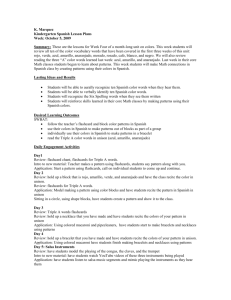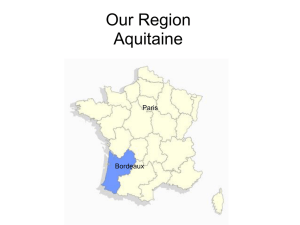Aujourd`hui c`est mardi le onze janvier
advertisement
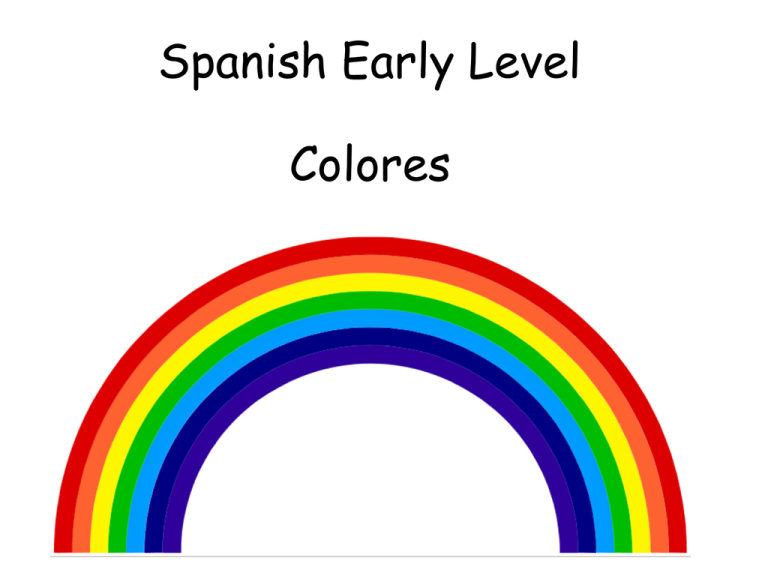
Spanish Early Level Colores Early Level Significant Aspects of Learning • Use language in a range of contexts and across learning • Develop confidence and enthusiasm to communicate using the language being learnt • Begin to develop an awareness of other countries, cultures and languages • Listen and join in with simple songs, stories and rhymes • Explore and recognise patterns and sounds of language through listening, watching and playing • Understand, respond to and say simple greetings and personal information (e.g. name) • Repeat and understand simple familiar language from a familiar source • Actively take part in simple daily routine language • Participate in familiar games including outdoor learning • Begin to explore resources to support my learning e.g. picture dictionaries Vocabulary Colours Aim to teach at least 5 of the colours at Early Level initially and build up as pupils progress towards 1st. ¿De qué color es? Es azul blanco rojo verde amarillo rosa negro gris violeta marrón What colour is it? It is blue white red green yellow pink black grey purple brown ¿De qué color es? Es azul Es blanco Es rojo Es verde Es amarillo Es rosa Es negro Es naranja Es gris Es violeta Es marrón Embedding the language Whenever colours feature as part of an activity or story ask the question, “¿Qué color es?” to prompt pupils to tell you what colour something is in Spanish. For example in art activities, colour mixing, stories, looking a pictures etc. Sample activities You will find a bank of sample activities which you can use to practise the vocabulary in the classroom. This is not a prescriptive list of activities and you can use or adapt them to suit the needs of your class. You will find a set of more supported activities in Early Feelings and more challenging activities in Level 2 Feelings. ¡Busca! 1. Busca el means “Find the” 2. Pupils have a selection of objects which are different colours in front of them. 3. Teacher calls out “Busca el” and adds a colour onto the end e.g. Busca el rojo! 4. The pupils must then hold up whichever object is that colour. 5. You can ask pupils to then say what colour it is e.g. Es rojo 6. Pupils can also then take a turn of asking others to “Busca el…” Circulo de colores game 1. Pupils sit in a circle, close their eyes and count to ten in Spanish 2. Whilst they are counting the teacher puts an object in the centre of the circle. 3. Once they reach ten they open their eyes (¡abrir los ojos!) 4. They then have to say what colour the object is. 5. This can be extended by passing the object around the circle and counting and whoever it lands on at the count of ten, has to say what colour it is e.g. “Es azul” or just “azul” Modelling dough 1. Modelling dough is a good kinesthetic way to reinforce the colours and can be used to create objects with the teacher asking for particular colours in Spanish. 2. For example can ask pupils to “¡Crear algo azul!” (create something…blue!) and then they pick the correct colour and make an object. 3. Another approach would be to combine numbers and colours e.g. ¡Cinco rojo! And pupils would have to form whatever number of coloured balls using the modelling dough. Songs and videos! You will find a bank of sample songs and videos which you can use to practise the vocabulary in the classroom. This is not a prescriptive list of songs and you can use or adapt them to suit the needs of your class. You will find a set of more supported activities in Early Feelings and more challenging activities in Level 2 Feelings. El poema de los colores ¿Es rojo? ¡Si, es rojo! ¿Es verde? ¡Si, es verde! ¿Es naranja? ¡Si!, ¡es naranja! ¿Es amarillo? ¡Si, es amarillo! ¿Qué es? ¡Es el arco iris! Colores (to tune for Frère Jacques) Azul, blanco, amarillo, verde Azul, blanco, amarillo, verde Violeta Violeta Naranja, gris y marrón Naranja, gris y marrón Rojo, negro, rosa Rojo, negro, rosa Se acabó. Se acabó ICT Resources online You will find a bank of sample ICT activities which you can use to practise the vocabulary in the classroom. This is not a prescriptive list of activities and you can use or adapt them to suit the needs of your class. You will find a set of more supported activities in Early Feelings and more challenging activities in Level 2 Feelings. Each of the slides contains an image of the website page. If you click on the image it will take you to the page. Alternatively you can use a link address which you will find in the slide notes. BBC Schools – Spanish colours Cartoonito Primary Spanish Resources ¡Adiós!
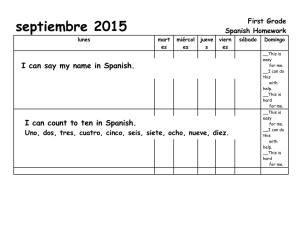
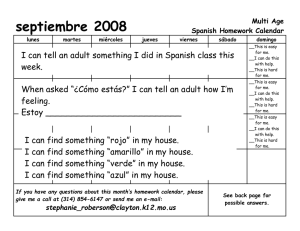

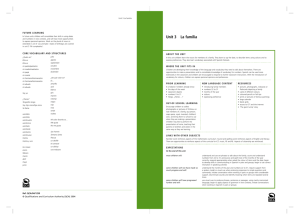

![afl_mat[1]](http://s2.studylib.net/store/data/005387843_1-8371eaaba182de7da429cb4369cd28fc-300x300.png)
